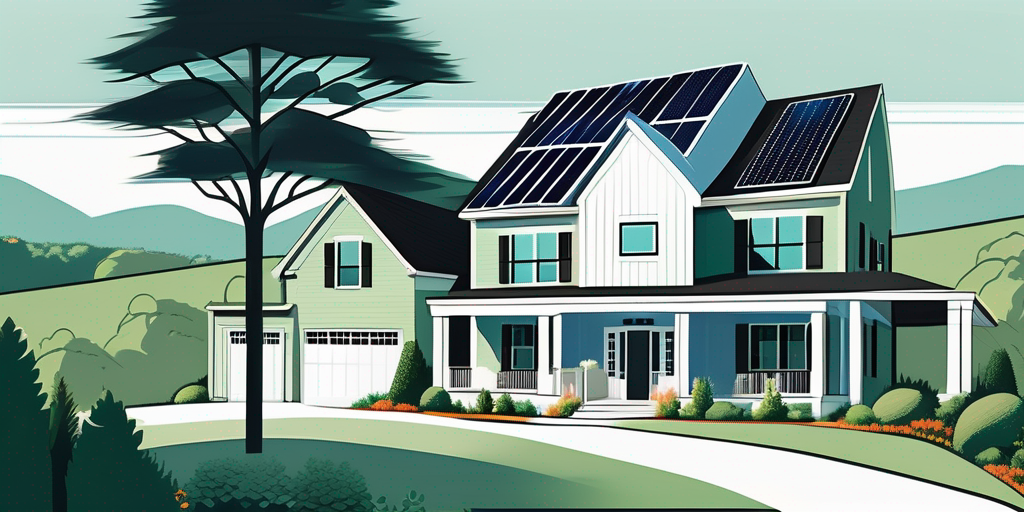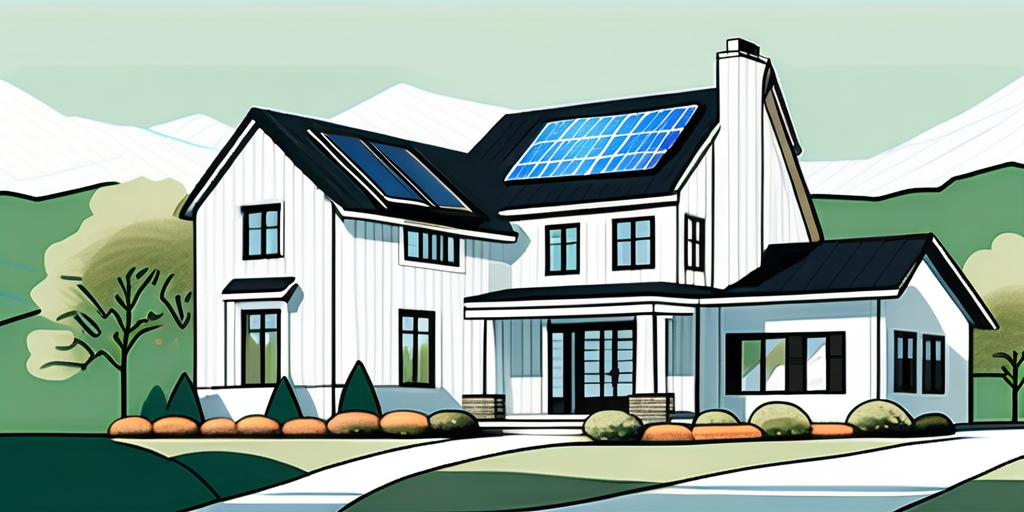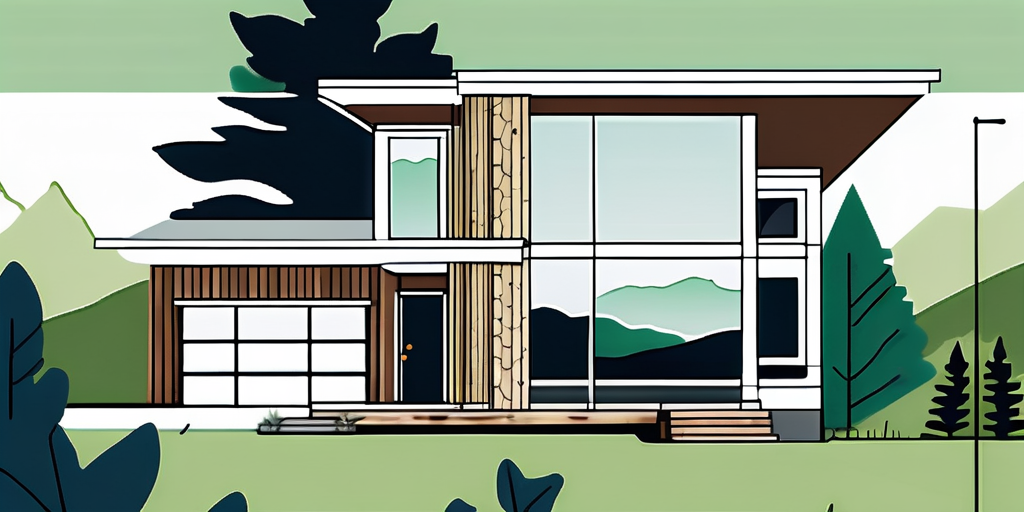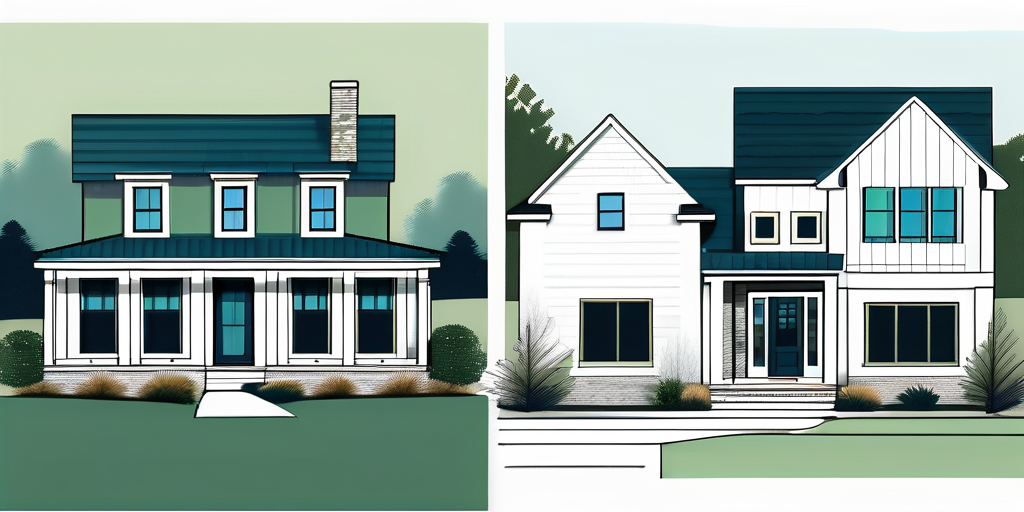
The homebuilding landscape in Tennessee National is continuously evolving, influenced by a variety of social, economic, and technological factors. Whether you are a prospective homeowner, a builder, or just someone intrigued by housing trends, understanding what’s happening now can provide valuable insights into the future. Let’s dive into the significant trends that are shaping homebuilding in this region.
The homebuilding sector in Tennessee National is experiencing a robust cycle of growth and change. As new techniques and preferences develop, builders are adapting to meet the needs of modern homeowners. This dynamic environment raises interesting questions about the features homebuyers value most.

One of the most notable trends is the increasing focus on sustainability. Homebuyers are becoming more environmentally conscious, preferring homes constructed with sustainable materials and energy-efficient designs. From solar panels to water-efficient fixtures, sustainable building practices are not just trends—they’re becoming requirements for many homebuyers.
This growing demand is leading to innovative approaches, including the use of recycled materials and advanced insulation technologies that reduce energy consumption. Builders who prioritize sustainability are not only appealing to a broader market but are also contributing positively to the environment. Additionally, many new developments are incorporating green spaces and community gardens, fostering a sense of community while enhancing the ecological footprint of the neighborhood.
Technology is revolutionizing the homebuilding sector in Tennessee National. Smart home technology, like automated lighting and security systems, is becoming increasingly common. Homeowners are looking for homes that integrate technology seamlessly, allowing them to control various functions through their smartphones or tablets.
Moreover, advancements in construction technology, such as 3D printing and drones for surveying, are making the building process more efficient. These innovations help reduce costs and construction time, which is a win-win for builders and buyers alike. Furthermore, the integration of virtual reality (VR) in home design allows potential buyers to visualize their future homes before construction even begins, providing a more immersive experience that can lead to more informed purchasing decisions.
Another significant trend is the shift towards open-plan living spaces. Homebuyers are gravitating towards homes with fewer walls separating rooms, favoring a layout that promotes a sense of openness and connectivity. This design not only maximizes natural light but also encourages social interaction, making it ideal for both families and entertaining guests.
Living rooms that flow into kitchens and dining areas create a spacious feel that many find appealing. This trend is likely here to stay as more people prioritize functionality and a comfortable living experience. Additionally, the incorporation of multifunctional furniture and flexible spaces allows homeowners to adapt their living areas for various activities, from work-from-home setups to family game nights, further enhancing the appeal of open-plan designs. As lifestyle needs continue to evolve, so too will the architectural responses to these preferences, shaping the future of homebuilding in Tennessee National.
As the landscape continues to evolve, certain features are gaining popularity among buyers in Tennessee National. Understanding these key aspects can offer deeper insights into future homebuilding practices.

Outdoor living spaces are increasingly becoming a staple in modern Tennessee homes. Buyers are looking for homes with patios, decks, and landscaped yards where they can relax or entertain guests. This trend reflects a greater appreciation for nature and the outdoors, especially in a state rich with beautiful scenery.
Outdoor kitchens, fire pits, and comfortable seating areas are now common features that extend living spaces beyond the home, allowing residents to enjoy the natural surroundings year-round. Additionally, many homeowners are incorporating elements such as outdoor lighting, water features, and native plant gardens, which not only enhance the aesthetic appeal but also promote local biodiversity. These thoughtfully designed spaces serve as an extension of the home, providing a perfect backdrop for family gatherings, barbecues, or quiet evenings under the stars.
Connected home technology is more than just a trend; it's becoming an expectation. Smart homes equipped with devices that can control lighting, heating, and security are on the rise, offering both convenience and energy savings. This high-tech appeal is particularly attractive to younger homebuyers, who prioritize functionality and efficiency.
Moreover, the integration of smart technology into homes supports a lifestyle that simplifies daily tasks, making it easier for residents to manage their living environments effortlessly. From smart thermostats that learn user preferences to advanced security systems that can be monitored remotely, these innovations are reshaping how people interact with their homes. Additionally, the ability to integrate voice-activated assistants and smart appliances adds a layer of personalization and ease, making everyday life more enjoyable and efficient.
As part of the sustainability movement, energy-efficient homes are in high demand. Buyers are more informed than ever about the long-term cost benefits of energy efficiency, including lower utility bills and a smaller carbon footprint. Builders responding to this demand are incorporating energy-efficient appliances, superior insulation, and advanced heating and cooling systems into their designs.
Homes built with energy efficiency in mind not only attract buyers but also often qualify for various incentives and tax credits, making them even more appealing in the current market. Furthermore, many homeowners are opting for renewable energy sources, such as solar panels, to further enhance their homes' sustainability. This shift not only contributes to a greener environment but also empowers homeowners to take control of their energy consumption and costs. As the demand for eco-friendly living continues to rise, builders are likely to innovate even further, integrating sustainable materials and practices into new constructions, thereby setting a new standard for homebuilding in Tennessee.
The COVID-19 pandemic has reshaped many aspects of life, including homebuilding trends. With more people working and spending time at home, certain features have gained importance than ever before.

With remote work becoming more commonplace, the demand for dedicated home office spaces has surged. Many buyers are looking for homes that can accommodate a comfortable and functional office, allowing them to work without distractions.
This trend has prompted builders to rethink floor plans, incorporating flexible spaces that can easily transition from family rooms to home offices, catering to this new work-from-home culture. Additionally, the integration of technology has become paramount, with many buyers seeking homes equipped with high-speed internet access and smart home features that facilitate remote work. The ability to have video calls without interruptions and access to reliable connectivity has made these features non-negotiable for many prospective homeowners.
In light of the pandemic, many families are seeking larger homes that provide ample space for both living and working. The need for separation between work and personal life has increased the demand for homes with additional rooms to accommodate everyone’s needs.
Buyers are now prioritizing homes with multiple bedrooms, spacious basements, and large yards, reflecting a desire for room to grow and thrive amidst changing lifestyle dynamics. Furthermore, outdoor spaces have gained newfound significance, with many families looking for homes that offer patios, decks, or gardens where they can unwind and enjoy fresh air. The trend towards larger living spaces also includes a focus on multi-generational living, as families are increasingly considering homes that can comfortably house extended family members, allowing for shared resources and support during uncertain times.
The focus on health and wellness has also become a major influence in homebuilding. Homebuyers are actively seeking features that promote well-being, such as improved air quality, natural lighting, and spaces for exercise or relaxation.
Features like large windows, open layouts that promote airflow, and outdoor areas to facilitate physical activity are becoming essential. Builders who prioritize health-conscious designs may find themselves at a distinct advantage in the current market. Additionally, the integration of sustainable materials and energy-efficient systems is gaining traction, as buyers become more environmentally conscious and seek homes that align with their values. The incorporation of wellness amenities, such as meditation rooms, home gyms, and even saunas, is increasingly seen as a valuable investment in one's health, reflecting a broader trend towards holistic living that prioritizes both physical and mental well-being.
With a clear understanding of the current landscape, we can start to predict what the future holds for homebuilding in Tennessee National. Anticipating trends can help builders and buyers alike make informed decisions.
The push for sustainable and eco-friendly building practices is likely to intensify in the coming years. As more people recognize the importance of environmental stewardship, builders who adopt green practices may find themselves leading the charge in this evolving market.
Green certifications and sustainable housing initiatives will likely gain precedence, making it essential for builders to stay ahead of regulations and consumer preferences. This shift is not just about compliance; it also represents a significant opportunity for builders to differentiate themselves in a competitive marketplace. By incorporating renewable energy sources, such as solar panels and geothermal heating, and using sustainable materials, builders can appeal to environmentally conscious buyers who are willing to invest in homes that align with their values.
Prefabricated homes, which are constructed off-site and assembled at the location, are expected to increase in popularity. This building method brings unique advantages, including shorter construction time and reduced labor costs.
As the need for affordable housing continues to grow, prefabricated homes may provide a viable solution, attracting a new demographic of buyers looking for efficiency without compromising quality. Additionally, the modular design of these homes allows for customization and scalability, which can cater to families of different sizes and lifestyles. As urban areas become more densely populated, prefabricated homes can also be an effective way to maximize land use, providing stylish and functional living spaces in smaller footprints.
As technology continues to advance, the role of home automation in new builds will only expand. Future homes will likely feature even more integrated systems that enhance convenience, security, and efficiency.
This is akin to creating a personalized lifestyle: as automation becomes more accessible, we can expect that the homes of tomorrow will be designed with individuality and technology at their very core, catering to a variety of needs and preferences. Smart home systems will not only allow homeowners to control lighting, heating, and security remotely but will also integrate with health and wellness technologies. Imagine a home that monitors air quality, adjusts temperature based on your preferences, and even reminds you to take breaks or hydrate throughout the day. Such innovations will redefine the concept of home as a sanctuary, emphasizing comfort and well-being.
In summary, the homebuilding trends we are witnessing in Tennessee National are reflective of a broader change in societal values—innovation, sustainability, and flexibility are now top of mind for both builders and buyers. As these trends continue to evolve, they set the stage for an exciting future in homebuilding.